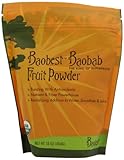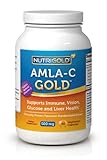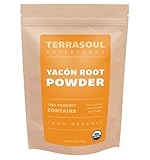Refining the Resistant Starch Story – Part 1 (Other non-RS Fibers)
June 3, 2014 by 178 Comments
A Tim "Tatertot" Steele and Dr. Grace Update, Part 1 of 3...
While researching for our upcoming best-seller, we've been spending a considerable amount of time looking at Resistant Starch and other fibers that act as food for gut microbes, and thought it was time for some RS updates (see this recent success story about using lots of fermentable fibers, not just RS). We asked a few regular commenters to help us vet some of these ideas. So thanks to GabKad, Marie, Gemma, and DuckDodgers for letting us bounce this off you, and for your patience as we piece it all together.
Commenter Gemma keeps dropping gems around here. Last week she linked this April 2014 study on the genetics of longevity. Included in the study are many of the ideas we've been discussing:
Indeed, the most comprehensive view is to consider the human being as a “metaorganism” resulting from the close relationship with symbiont microbial ecosystems. A particular attention has been recently devoted to the gut microbiome (GM). The GM probably represents the most adaptable genetic counterpart of the human metaorganisms, being extremely plastic in response to age-related physiological changes in diet and modification in lifestyle.
Nearly one year ago, in one of the first RS blogs, Richard and I wrote the following of Resistant Starch:
Unanswered Questions
Absolutes
- What is the optimal dose?
- What is the optimal source?
- Will it make a difference in the grand scheme of things if implemented on a worldwide basis?
- Is it contraindicated for anybody?
- RS supports a healthy gut microbe population
- RS exhibits undeniable effect on glucose control and satiety
- RS in amounts of 20-50g /day are well tolerated
- RS can come from many sources including real food
We're closing in on most of the unanswered questions, thanks to all the readers and self-experimenters who've been playing along. We've also finessed a couple of the "absolutes."
The studies that were dug up initially when we started spreading the word on RS used a combination of starches and fiber types to get the desired outcomes, which brings us to our updates that comprise the parts of this series:
- Other non-RS fibers
- RS2 and RS3 are not exactly the same
- RS3 contents in foods
We've dug up treasure troves of information on past civilizations that ate copious amounts of resistant starch. RS was with humanity from its very beginnings and stayed with him as he migrated to all corners of the earth. RS in antiquity was eaten in the forms of RS1 (in seeds mainly), RS2 (raw resistant starches), and RS3 (cooked and cooled resistant starches). From evidence left behind in petrified poop (coprolites), it was obvious our ancestors ate lots of plant seeds. From the foods available to our earliest human ancestors and evidence left behind on their tools, teeth, and bones, it was clear they ate raw starches from underground sources (yams, tiger nuts, etc…) and seeds/grains for at least one million years. And once humans began cooking, they ate RS3 from cooked and cooled starches. Humans have been using controlled fire since big brains evolved. Archaeological evidence shows sustained use of fire and heat in Europe by Neanderthals nearly 400,000 years ago—both for unlocking energy in food, as well as sophisticated heating of tar to make arrows and other weapons. From 50,000 year old evidence left behind on their tools and teeth, Neanderthals consumed starch and likely roasted their tubers and roots.
RS sources are special feasts for our microbiota, but they were never available as an isolated fiber. Sedge tubers, rhizomes and bulbs of littoral plants, roots, wild carrots, and tiger nuts were likely consumed whole—fibrous skin and all—either raw or cooked. In nature, there seems to be a matrix of fermentable plant fibers all in one package. The highest concentrations being RS, which we consider a foundational fuel, for both its ubiquitous availability and exuberant effects on the microbiota:
- Resistant Starch (RS) - the most common storage carbohydrate of plants. Found in tubers, roots, yams, green bananas, green plantains, legumes, lentils, peas, nuts, carrots, sedge nutlets, rice, maize, grains.
- Oligosaccharides (inulin, FOS, GOS, XOS) - the second most common storage carbohydrate of plants (chicory, onion, leek, dandelion, endive, asparagus, green bananas, legumes, lentils, oats, rice bran, maize, grains, fermented grains).
- Non-Starch Polysaccharides (NSP) - some are structural and some not
- in certain plant roots and wood, e.g., konjac
- Gums and mucilages
- Gums and mucilages
When a real food item is eaten, it's always accompanied by several of these other fiber types. Ancestrally, no society avoided or restricted any of the above fermentable substrates from whole, unrefined plants. Potato starch and other singly isolated fiber fractions as supplements have great value and merit. This isolated form of RS2 can be used for either maintenance or rehab of shattered or disrupted guts; however, a spectrum of fiber sources provides more sustenance to the diversity of gut bugs, their wide palates, and their hongry appetites.
There've been many success stories here at FTA and AnimalPharm with RS, especially RS2 from raw potato starch, but don't let that lull you into thinking that raw potato starch is the be-all and end-all to gut health. And don't forget the soil-based probiotics—the very thing humans got regular replenishment of; essentially, as dirt on their food!
We'd like to advise everyone who's consuming raw potato starch to consider the ancestral angle and add other fibers alongside it, as in Richard's Smoothie Mix, or taking it before, during, or after a meal containing other starches and fibers. Also, maybe brush up on Richard's RS-Based Dietary Guidelines he wrote back in December. And, if this is all new to you, take a look at The RS Primer for Newbies (soon to be incorporating the three parts of this series).
As we were putting this together, and wondering how readers would respond, commenter Wilbur remarked about his own experiment:
Every day, I take 3+ Tbsp of Potato StarchThis may be taking it to a whole new extreme, but it helps illustrate our point: there are lots and lots of fiber types out there! Don't limit yourself to RS alone, but do use it to your advantage. I have a feeling that if RS had been included in the initial assessments of Total Dietary Fiber over the past 30-40 years, we wouldn’t be having this discussion now.
, but also Flaxseed
, Inulin
, FOS
, Baobab
, Larch Arabinogalactan
, Beta GlucanCurrent Price: $12.49Prices are accurate as of 07/13/2014 at 1:55 PM.
, Chitosan
, Amla
, Yacon Root Powder
, Glucomannan
, Psyllium
(I poo poo'ed this in the past, but reconsidered my stance), Guar Gum
, and a bunch I'd have to write down. Plus some I take occasionally, like Wheat Grass
. Every fiber I take has a story, and I favor the ones that seem most beneficial to me. But the goal is always to improve my gut.
That and I eat lots of veggies. As many as I can. Green stuff, beets, parsnips, green beans, and tons of green onions. At least 3 cloves of raw garlic per day. Beans, lentils, etc. I make barley risotto every Thursday to eat with a fresh fish shipment at the farmers market, and this lasts for several days. Lately I have been eating lots and lots of berries because they are showing up at the markets.
[Note: there's nothing special about any of the brands linked, and they are not necessarily the brands Wilbur used.]
In the next installment, Grace will show you the main differences between RS2 and RS3 over on her AnimalPharm blog, then we'll mosey on back to here for Part 3, a primer on the RS3 contents in real food.














No comments:
Post a Comment